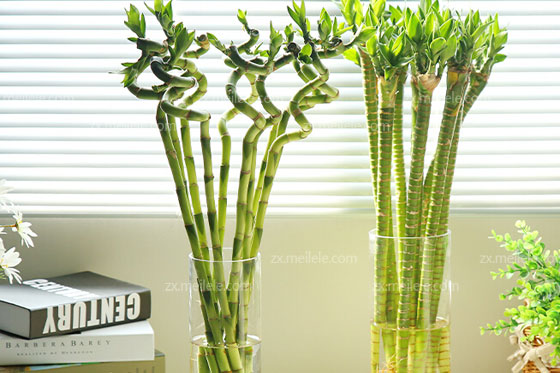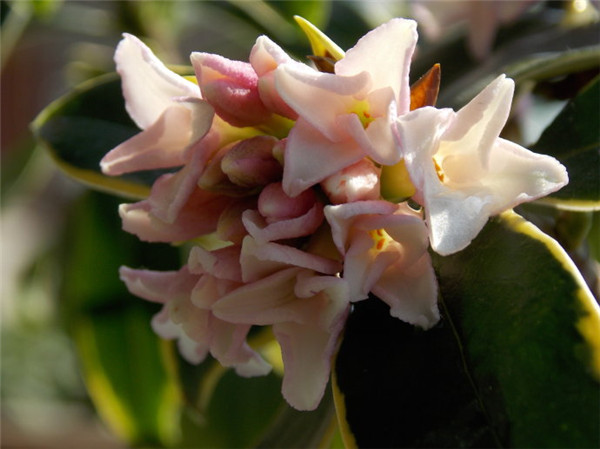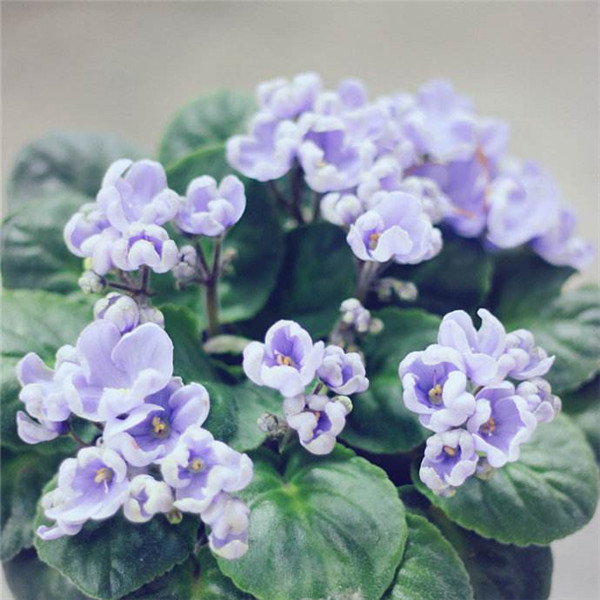How to transport bamboo leaves yellowing and roots black and rotten? what should be paid attention to in transporting bamboo hydroponics?
Transferred bamboo, because of its beautiful meaning and elegant posture, has become a favorite family breeding plant, but in daily life, even if many people love it and take care of it, it can not avoid problems such as yellowing leaves, black roots and rotten roots, and finally did not live for too long, so in general, what should be paid attention to in hydroponics? The following editor will reveal the problems and matters needing attention in the aquaculture of transferred bamboo for you one by one.

The transfer bamboo is suitable for growing in sandy soil or semi-muddy sand and alluvial clay with good drainage, and the temperature is suitable for 18 ℃ ~ 24 ℃. It can grow all the year round, but if it is lower than 13 ℃, the plant will dormancy and stop growing. When the temperature is too low, there will be yellowish-brown patches on the leaf tip and edge due to insufficient water absorption by the root system. The lowest temperature of overwintering should be more than 10 ℃, and the transferred bamboo is not strict in light, so it is suitable to grow under bright scattered light. Excessive light and exposure will cause leaf yellowing, chlorosis, slow growth and so on. Analysis of yellowing phenomenon of transporting bamboo leaves 1. Burning yellow and lack of light yellow: similarly, excessive or insufficient light will also lead to yellowing of rich bamboo leaves, and the yellowing produced by excessive light is called burning yellow, which is characterized by macula in the part of the leaves facing the sun; lack of light yellow is the lack of light leading to the lack of chlorophyll synthesis and yellowing, the whole leaf yellowing and shedding can be avoided as long as the light is strengthened. 2. Fat yellow and lack of fertilizer: every kind of plant needs fertilizer, and the concentration of fertilizer will directly affect the growth state of the plant. Proper fertilization will make the plant thrive, while too much or too little fertilizer will cause a series of diseases, such as the yellowing of bamboo leaves. Too much fertilizer makes the new leaves thick and dull, and the old leaves are scorched yellow and shedding, so the fertilizer should be cleaned and removed; insufficient fertilization makes the young leaves lighter, the old leaves gradually turn yellow and apply thin fertilizer. 3. Water yellow and dry yellow: to judge whether the leaves of the transported bamboo are yellowing or yellowing can be judged by the different characteristics of yellowing leaves. The water-yellow leaves are reflected in the young leaves, and the old leaves do not turn yellow, while the dry-yellow old leaves are withered and yellow, and the new leaves grow more normally. After judging, you can increase or decrease moisture according to the cause of yellowing. Causes and solutions of yellowing of transferred bamboo 1. The leaves of transferred bamboo are yellowed by the wind: placed next to the TV set or where air conditioners and electric fans often blow, the leaf tip and edge of the transferred bamboo are easy to dry up. Solution: do not put the transfer bamboo next to the TV set or where the air conditioner and electric fan often blow. 2. Too much watering leads to yellowing of transporting bamboo leaves (water yellow): there is too much water in the bottle of transporting bamboo. Solution: it is recommended that you do not pass 5cm. 3. Sun exposure leads to yellowing of transferred bamboo leaves (burning yellow): long-term exposure in the sun will cause leaves to yellowing. Solution: as long as you move it back to the shade, it will get better over time. 4. Lack of sunlight leads to yellowing of transporting bamboo leaves (lack of light yellowing): transporting bamboo is easy to yellowing due to lack of light for a long time. Solution: transport bamboo like to scatter light, but it is best to give sufficient light in winter. 5. The conditions lead to the yellowing of bamboo leaves, such as too dark light, stuffy air, dry air and so on. Solution: for light reasons, cut off the yellow leaves first to create a clean, warm, cool, moist and better environment with scattered light. When there are bamboo branches rotten, loosen the banding of the transferred bamboo, pick out the rotten ones, re-bind them, and make them recover step by step. 6. The low temperature leads to the yellowing of the leaves of the transported bamboo: the leaves of the transported bamboo will turn yellow when the temperature is less than 10 °. Solution: pay attention to keep warm in winter, do not put it outside or by the window, but also pay attention to the temperature can not be too high, too high will be yellow. 7. Excessive fertilization of transferred bamboo leads to yellowing (fat yellow): the new leaf tip appears dry brown, the old leaf tip is dry and yellow, and the general leaf surface is thick and glossy, but most of them are uneven. Solution: be sure to stop fertilizing, reduce the number of fertilizers, and irrigate with more clear water. 8. Long-term lack of fertilizer of transferred bamboo leads to yellowing of leaves (lack of fat yellow): often without fertilization, only watering or not changing flowerpots for several years, the roots of transferred bamboo will knot together, resulting in malnutrition and yellowing of leaves. Solution: apply appropriate amount of fertilizer, or change the flowerpot and trim the roots. 9. Alkaline soil leads to yellowing of transported bamboo leaves: when the soil is alkaline, the leaves will yellowing. Solution: it can be sprayed with alum fertilizer and water, and the leaves will get better.
What if the bamboo root is black and rotten? Water nourishes rich bamboo roots black, mainly because there is no change of water for a long time, lack of oxygen in the water, plant cell respiration needs oxygen, lack of oxygen plants will temporarily carry out anaerobic respiration, produce alcohol, which will harm plants for a long time. Cause plant root cell alcoholism, a large number of death, seriously cause rotten roots, it is recommended to change more water. You can also cut off all the blackened roots with sharp scissors, and you can't leave any black ones. Plant them on the drainage hole of the flowerpot, cover them with two tiles, put base fertilizer on top of three centimeters of coarse-grained soil, and remember to cover the soil above the base fertilizer to avoid damage caused by sitting manure. Put the plant in the middle and add the soil two centimeters below the edge of the pot to facilitate later watering. Then put the flowers in a cool and ventilated place, the leaves are often sprayed, and the fertilizer and water can be managed normally after half a month. Transport bamboo conservation skills 1, try to choose to place transfer bamboo in a semi-shaded environment, transfer bamboo prefer a damp environment, such an environment in which transfer bamboo grows faster and leaves grow very bright. 2. The suitable growth temperature of transferred bamboo is 20 ℃ 28 min, so the transferred bamboo should be placed in a warmer room as far as possible to ensure its luxuriant growth. Although the transferred bamboo can withstand a low temperature of about 3 ℃, it will affect its growth for a long time, especially in cold winter to prevent frost. 3. Avoid exposing the transferred bamboo to the sun for a long time or putting it in a dark place where there is no sunlight. For a long time, it will cause the leaves to turn yellow, fade green, grow slowly and so on. Especially from April to September, it is necessary to avoid direct sunlight and exposure, otherwise it is easy to make the leaves rough, scorched and weak. What should be paid attention to in transporting bamboo hydroponics? 1. Temperature: rich bamboo is suitable for growing between 16 degrees and 26 degrees, cold can easily cause plant death, do not put it in cold places such as balconies and windows in winter, do not let the water freeze, and take anti-freezing measures when necessary. but if you want to turn on air conditioning in your home, try to keep the temperature between 16 and 26 degrees. 2. Lighting: although rich bamboo is a shade-loving plant, it is generally placed indoors and does not require much sunlight, but if it is not exposed to sunshine at all, it will also make the leaves withered and yellow and grow poorly, so it should be placed in a bright and ventilated environment as far as possible. so that it is fully exposed to light, so that it is more conducive to the growth of rich bamboo in winter. 3, display: do not put the rich bamboo next to the TV set or air conditioner, electric fan often blown to the ground, so as to avoid leaf tip and leaf edge dry, it is best to put it in a place with enough light. 4. Change water: generally rich bamboo grows a lot of small roots after a period of time. Try to change water to add water in winter. It is not suitable to change water after taking root. Water can only be added in time after water evaporation. Often changing water is easy to cause leaf yellow branches to wilt, and the added water is best to use well water. The water must be kept clean and fresh, and dirty water, hard water or oily water can not be used, otherwise the roots are easy to rot.
Time: 2019-05-04 Click:
- Prev

What if Phnom Penh Daphne loses its leaves? it turns out that these reasons are responsible for the loss of Phnom Penh's leaves.
Phnom Penh Daphne is a flower plant that many people like. In fact, Phnom Penh Daphne is a kind of plant that can watch both flowers and leaves, and the leaves of Phnom Penh look particularly beautiful in the sunlight. But when the leaves of our preserved Phnom Penh Daphne appear to lose leaves, what should we do?
- Next

Why African pansy does not blossom may be caused by these reasons?
As we all know, African pansy is a very beautiful flowering plant, and its flowering period is relatively long, and the color is bright and colorful, its ornamental value is very high, so it is very loved by people, but in the process of our daily maintenance, many people will encounter the phenomenon that African pansy does not bloom.
Related
- Fuxing push coffee new agricultural production and marketing class: lack of small-scale processing plants
- Jujube rice field leisure farm deep ploughing Yilan for five years to create a space for organic food and play
- Nongyu Farm-A trial of organic papaya for brave women with advanced technology
- Four points for attention in the prevention and control of diseases and insect pests of edible fungi
- How to add nutrient solution to Edible Fungi
- Is there any good way to control edible fungus mites?
- Open Inoculation Technology of Edible Fungi
- Is there any clever way to use fertilizer for edible fungus in winter?
- What agents are used to kill the pathogens of edible fungi in the mushroom shed?
- Rapid drying of Edible Fungi

